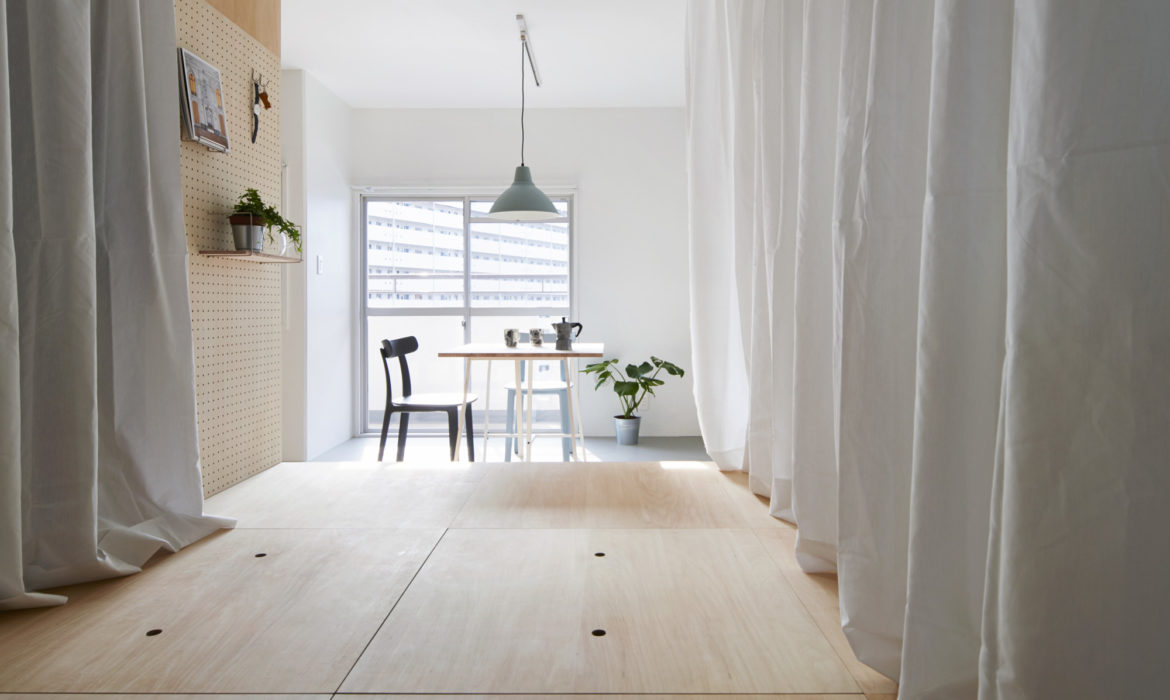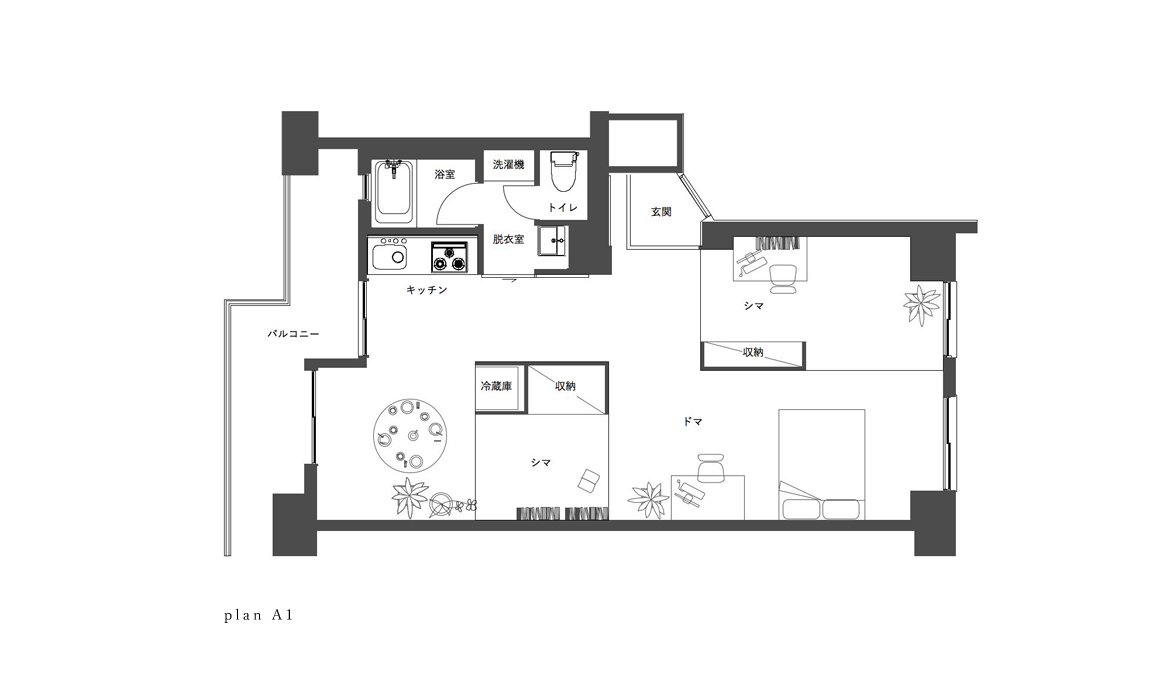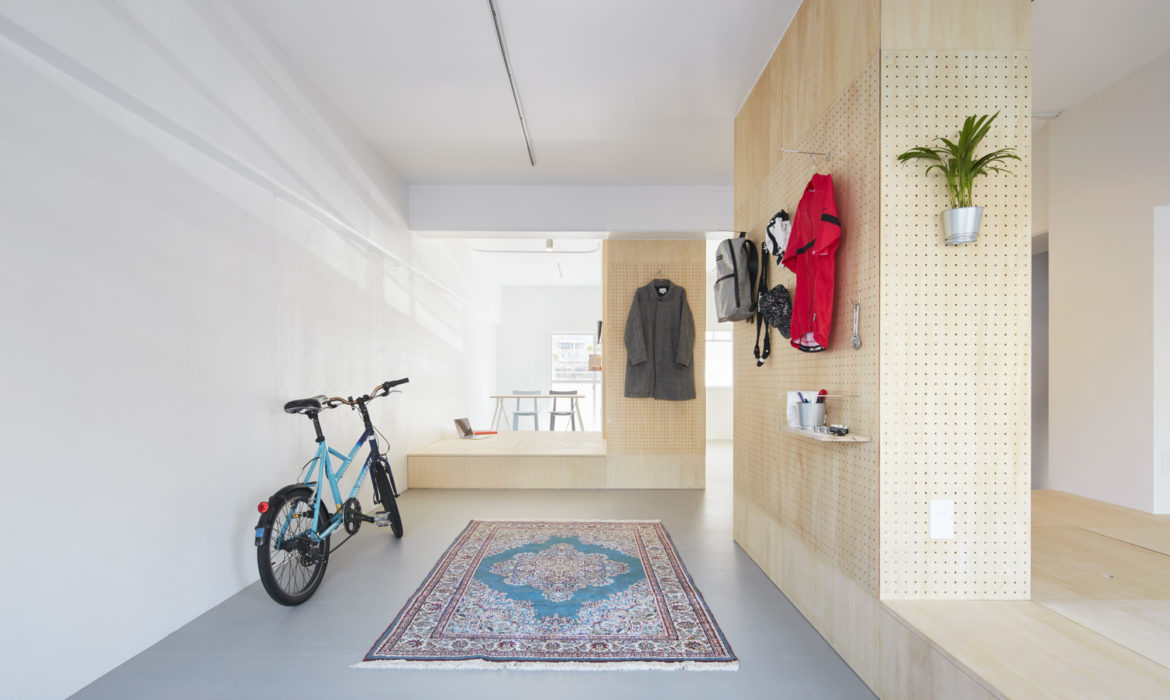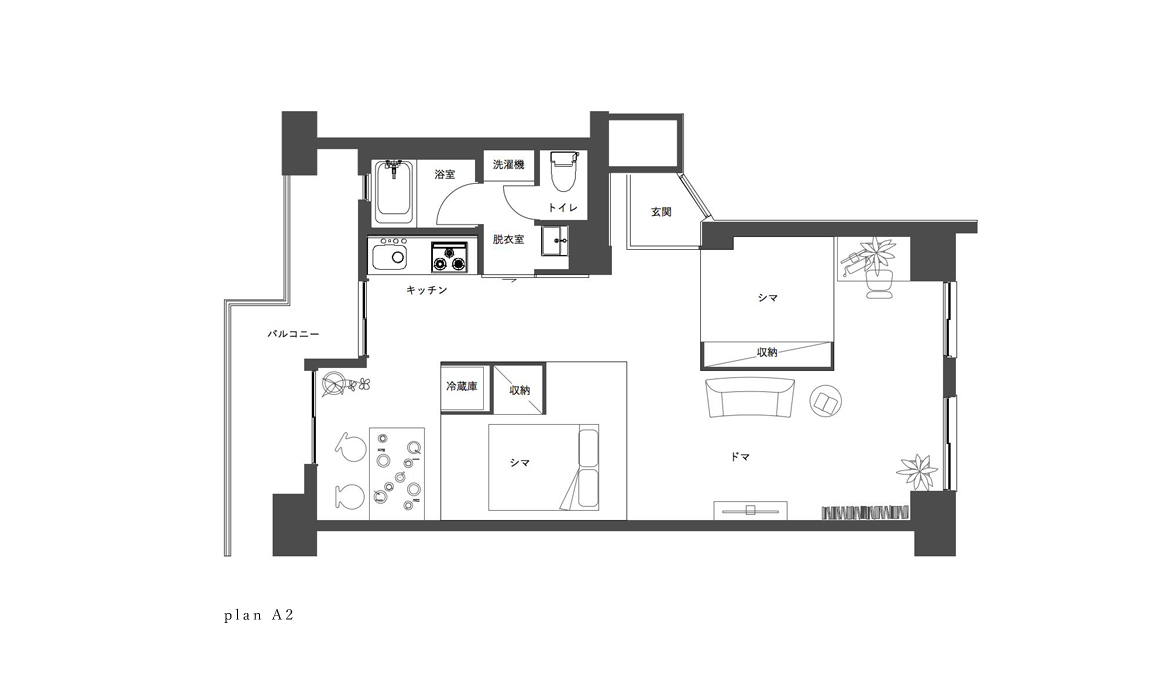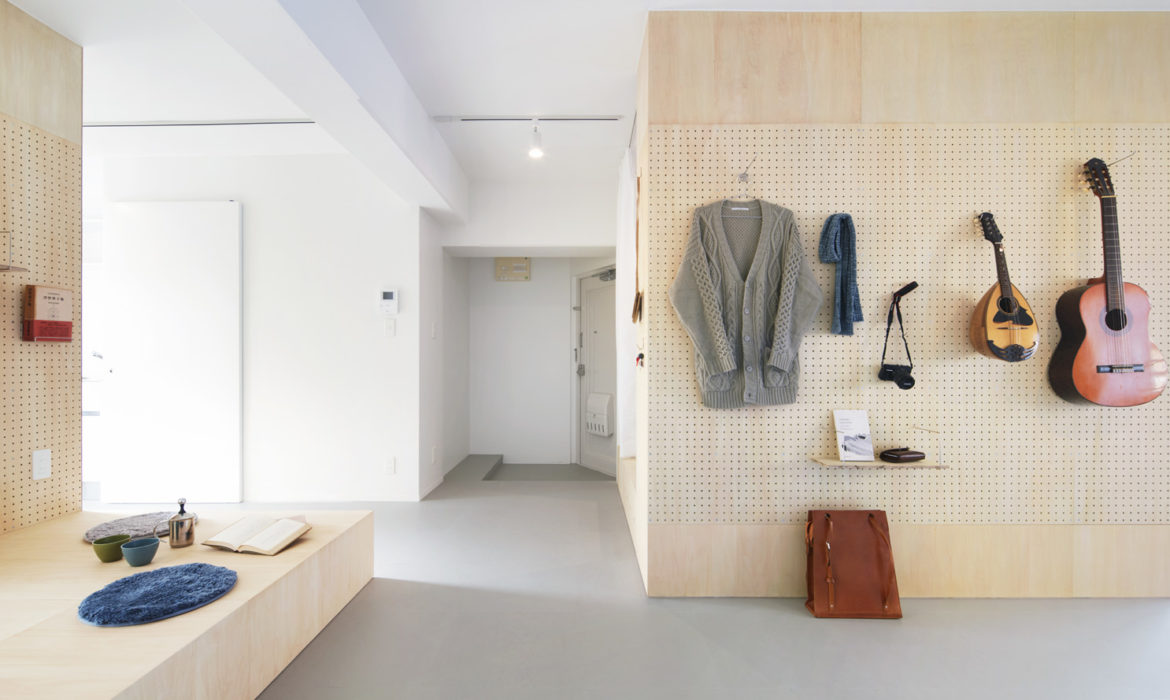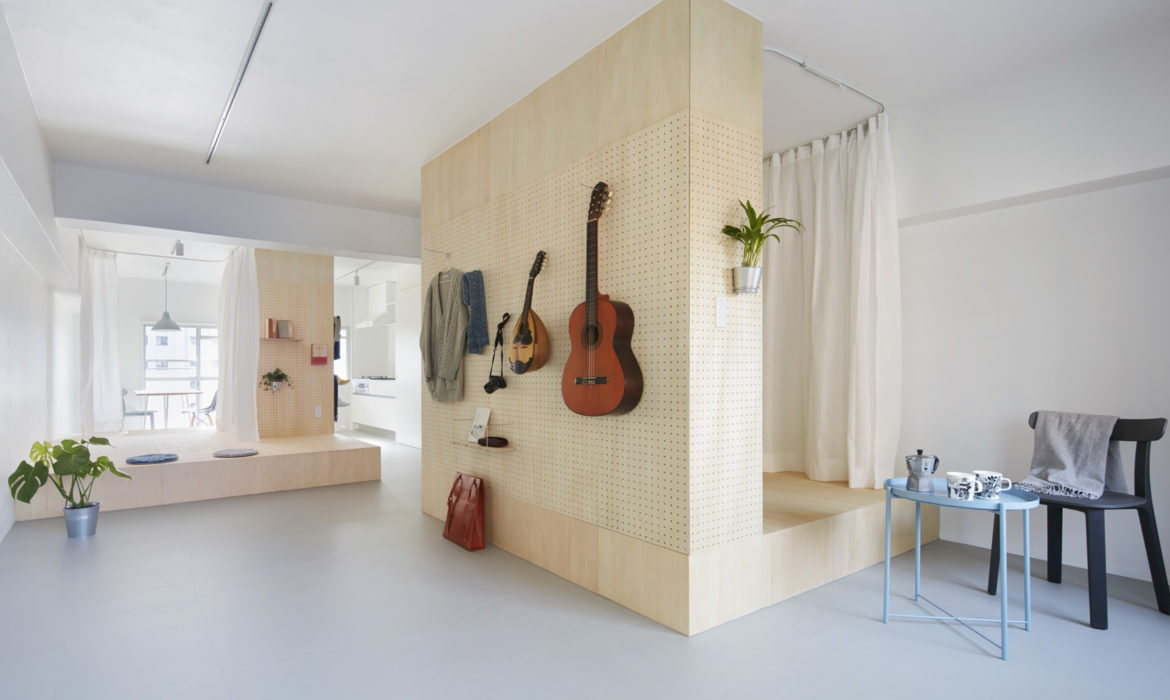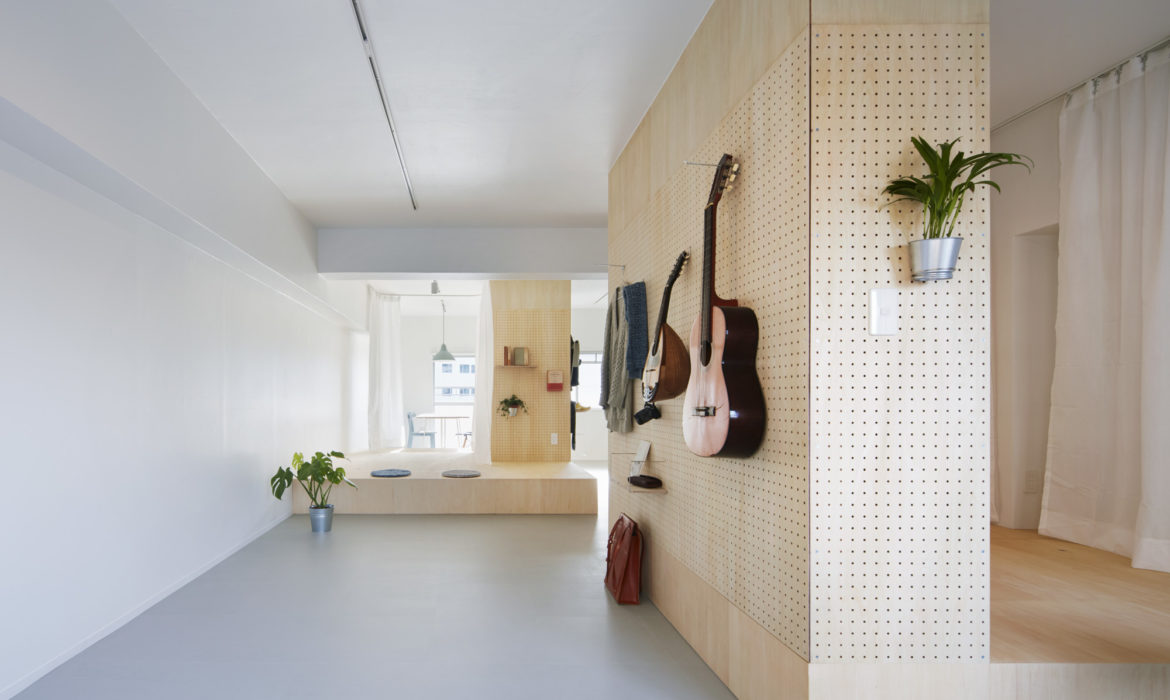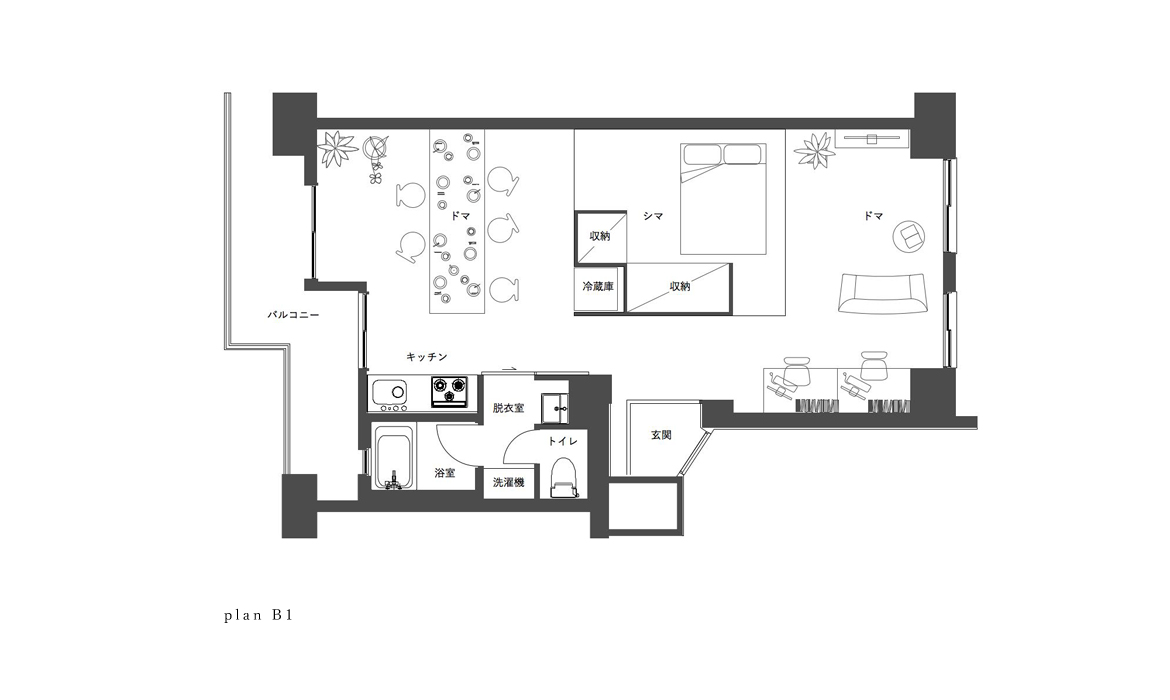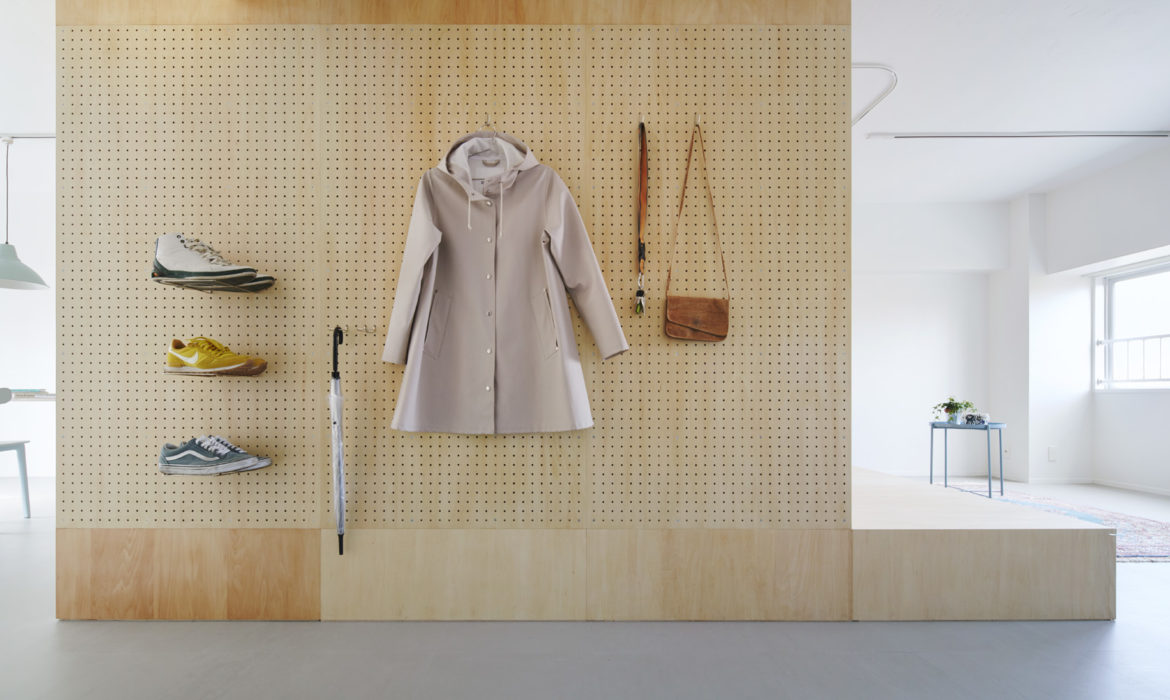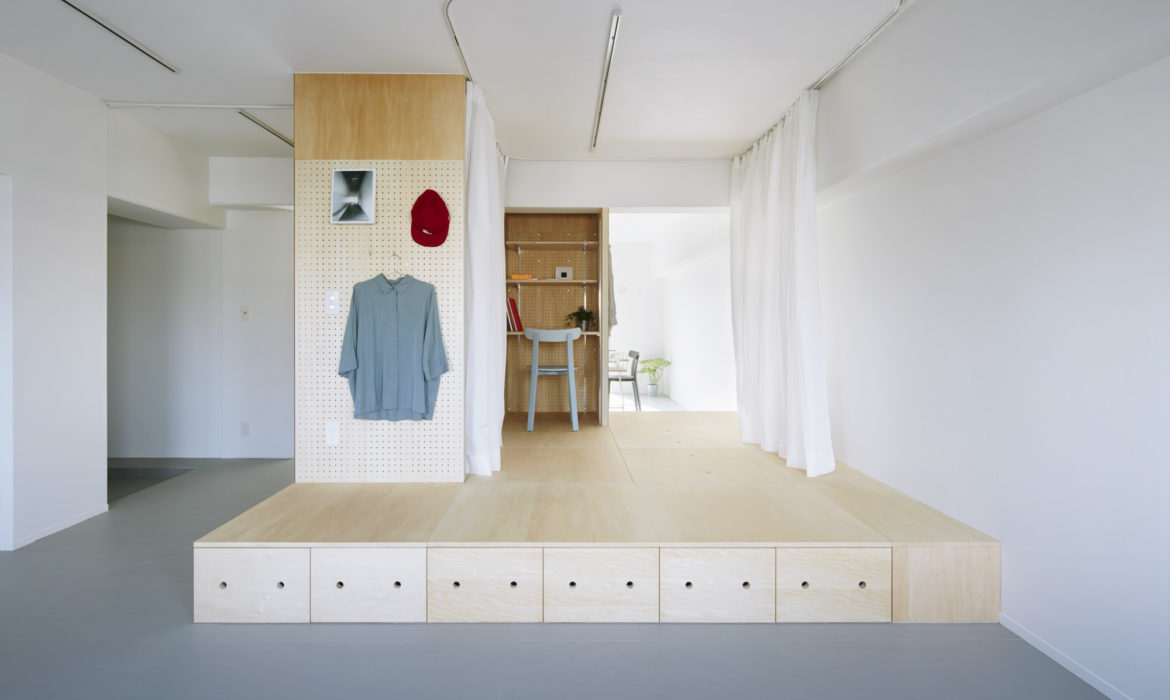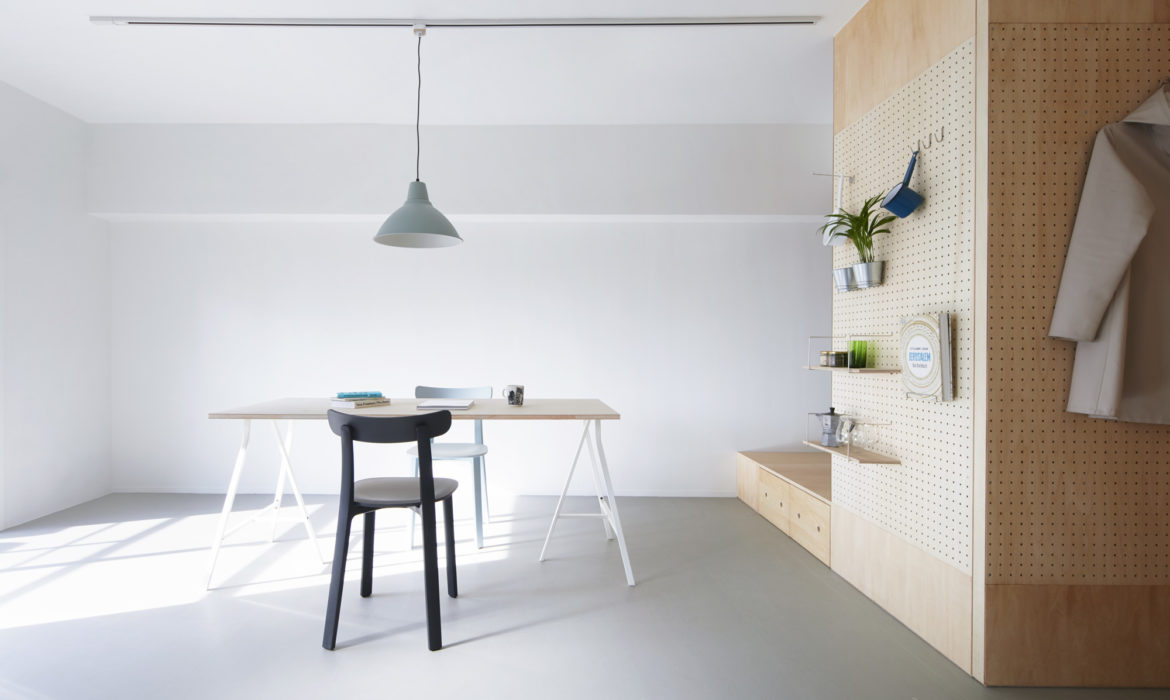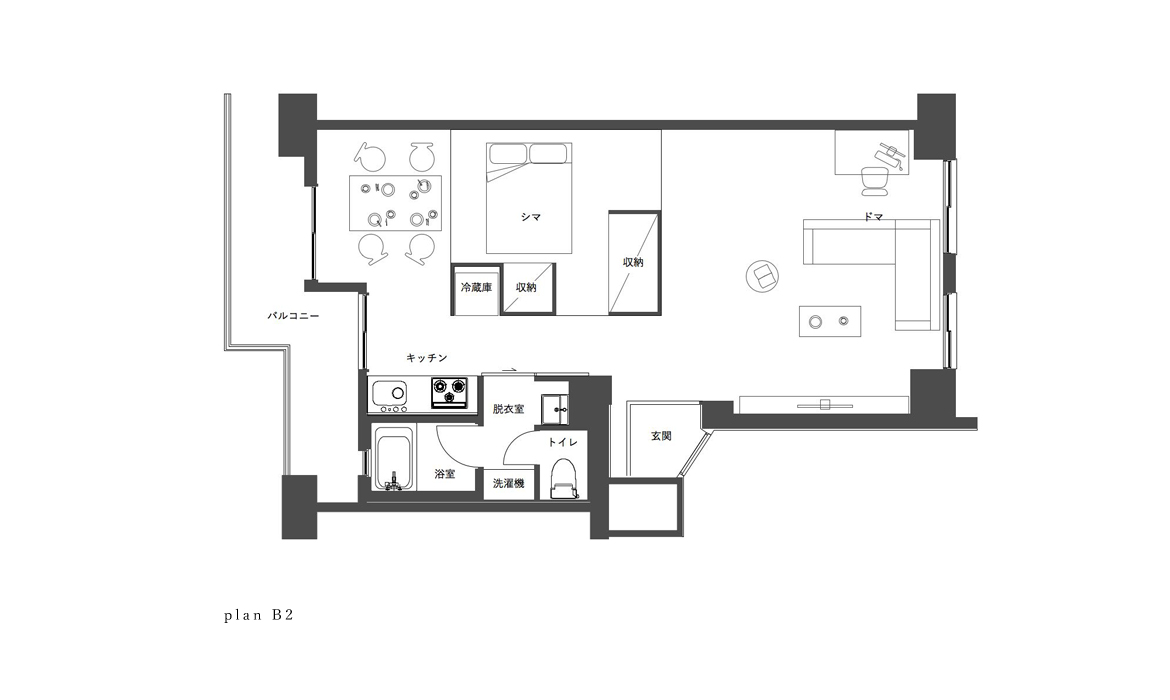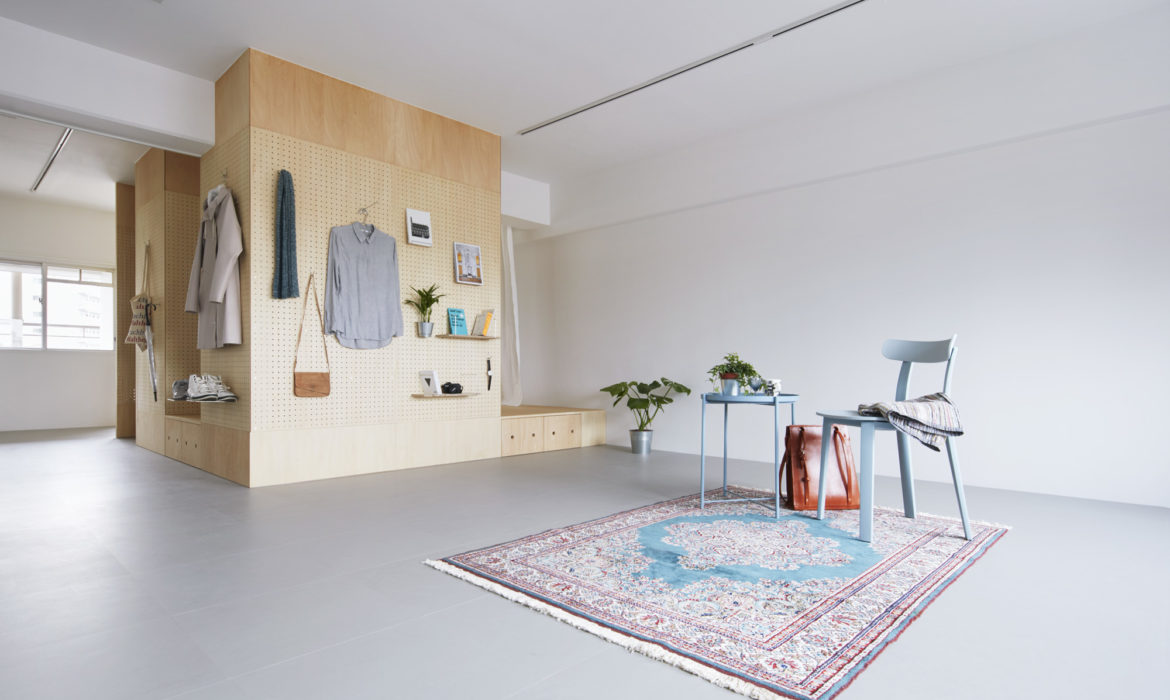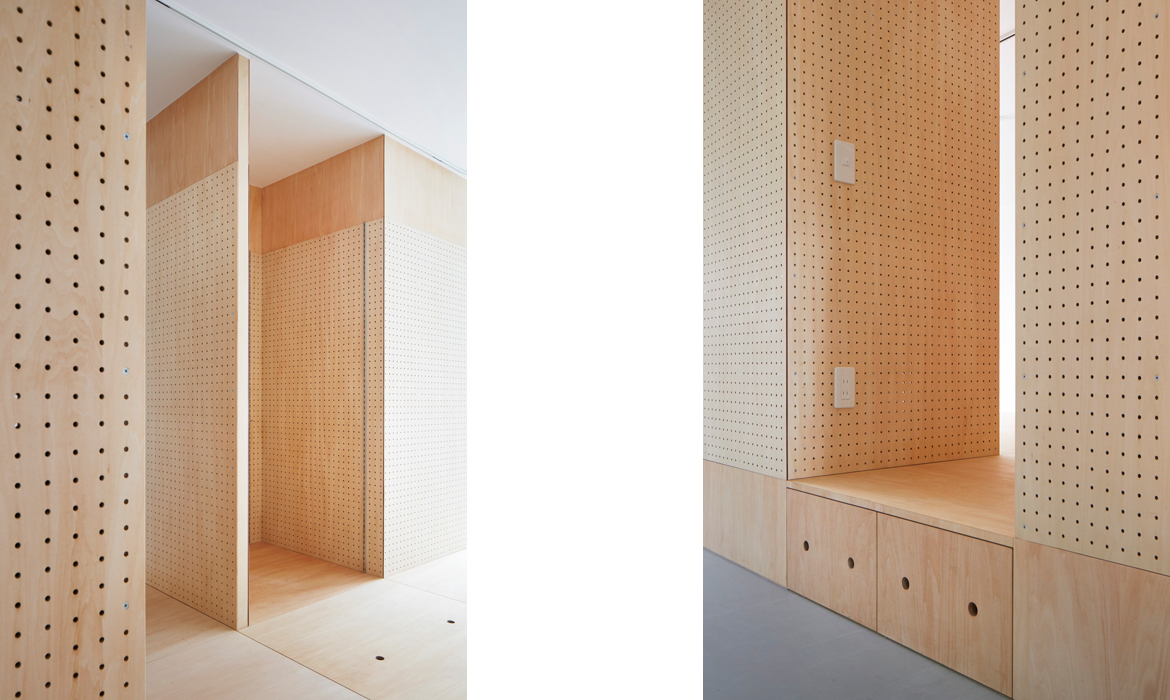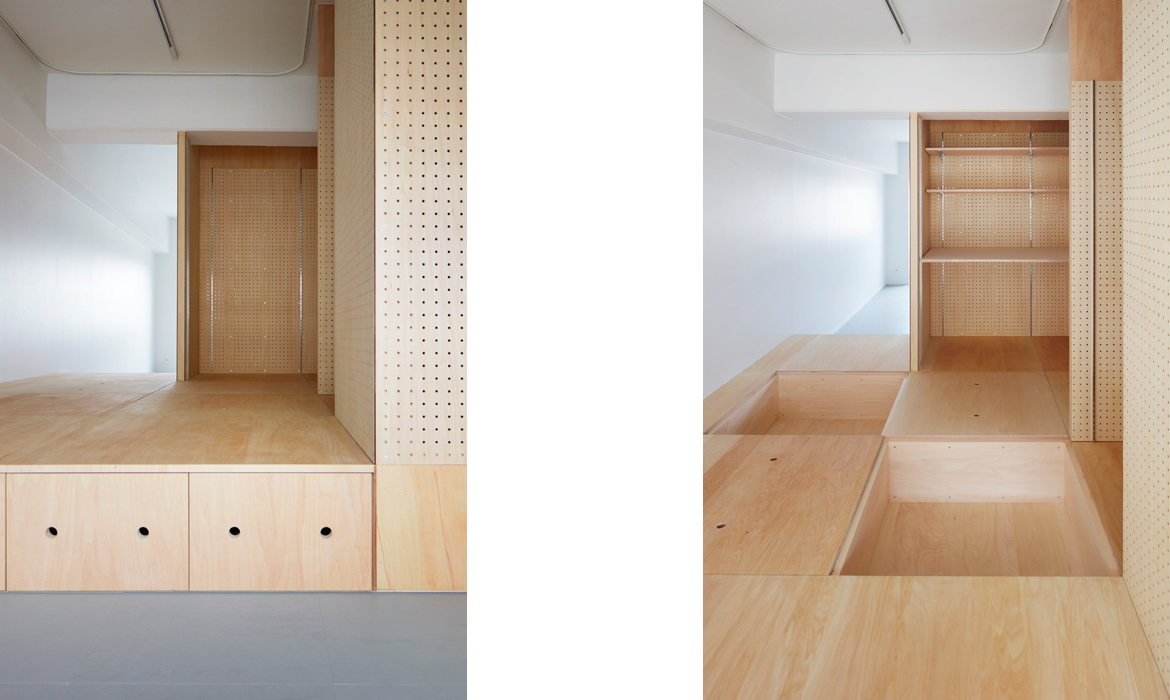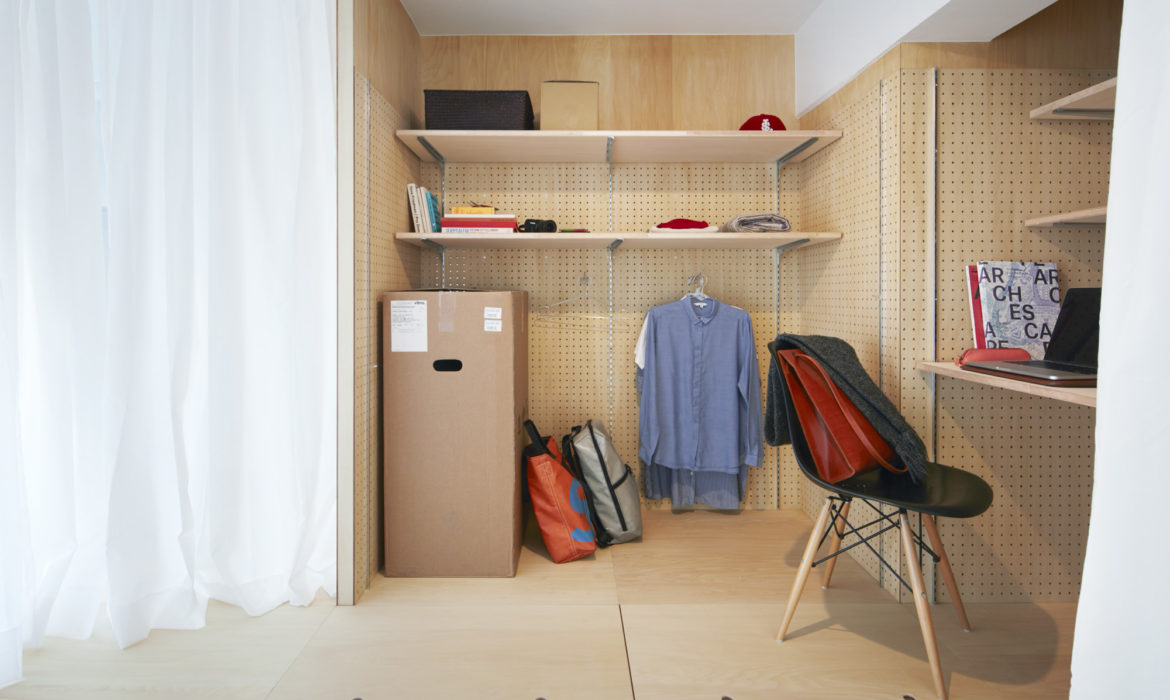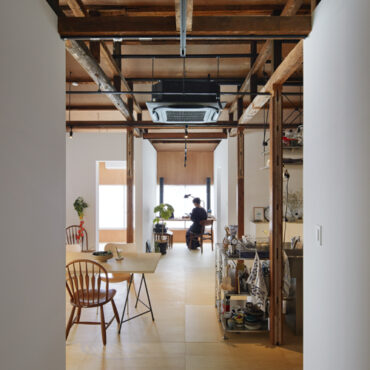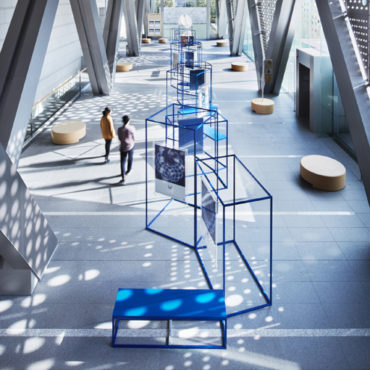Apartments in Senri
Suita, Osaka, Japan 2018-19
Photo : Koji Okumura (Forward Stroke inc.)
A renovation project for Danchi (public housing complex in Japan) located in Senri, Osaka. The purpose of this project was “gathering a wide range of residents in this old housing complex.” We designed 4 prototypes for this housing complex (10 units in total).
Regardless of the house, the residents optimize the space by changing the arrangement of their objects and the use of rooms. We thought that optimization is the “uniqueness of residents” and designed these apartments to emphasize it. We wanted to create a housing-units that accommodates a wide range of lifestyles.
The existing partition wall was dismantled, and we installed a wooden object called “Shima: island”. This wooden “Shima” like a piece of furniture that gently divides the space. Residents can lie on this “Shima”, enjoy relaxing time with their favorite things displayed on “Shima” walls.
This design leaves room for the resident to freely modify the space through “Shima”. Residents can freely place things which they love and discover their own way to use the shima. These small housing-units gradually turn into comfortable living scenes full of “uniqueness of residents”.
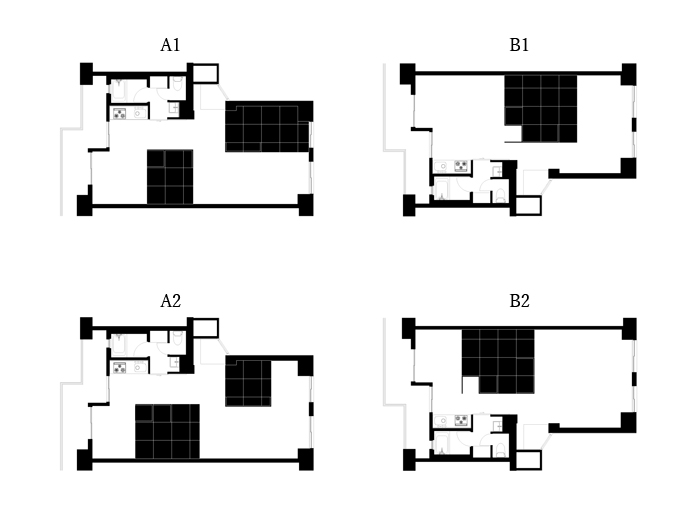
“Shima” gently divides the space
“Shima” placed in the room gently divide the space. In addition, curtains installed on the edge of “Shima” can clearly divide the room. Residents themselves can adjust their sense of distance according to the situation. This unit can be used as a single room or divided into rooms.
“Shima” becomes a place residents stay
“Shima” is 30cm high from floor level. It can be used like a bed or Engawa. If you put cushions on the edge of “Shima”, they will be dining chairs. The place where the shelf is attached may be used as a desk or could be changed into a closet. This is a place that gives the flexibility for the residents to use freely.
“Shima” keeps and exhibits things
“Shima” has 2 places where residents can place the things they have. Underfloor storage is for “things they want to hide”, and walls of the perforated board are places for “things they want to show” By using a hook for the perforated board, things can be freely arranged on vertical surfaces such as clothes, books. It means that residents can personalize their walls and discover how to use “Shima” and give the “uniqueness of residents” to each housing unit.
